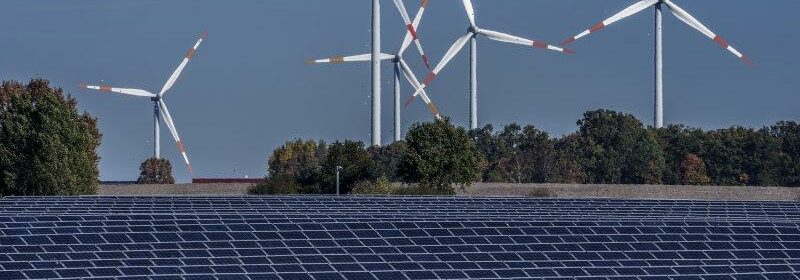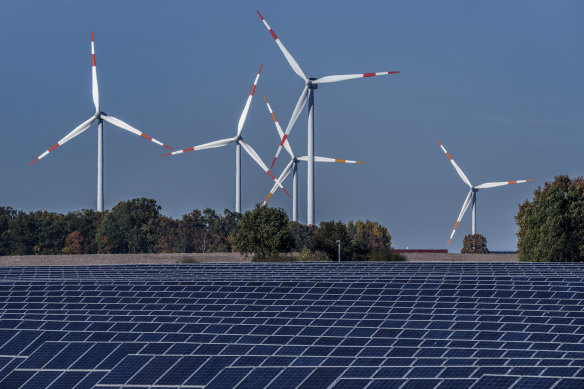Energy grid chief warns of looming electricity supply shortfall

The risk of blackouts is rising as coal plant closures accelerate and more renewables come online, prompting the energy market operator to warn that new investment in the power grid is needed to deliver a smooth transition from fossil fuels to clean energy.
Australian Energy Market Operator chief executive Daniel Westerman said the current list of fully funded energy projects did not have enough generation capacity to replace the forecast loss of coal power over the next decade.
The energy market operator is warning of looming challenges to electricity supply as the shift to renewables accelerates. Credit:AP
“Forecast reliability gaps have emerged across national electricity market regions due to considerable coal and gas plant closures, along with insufficient new generation capacity commitments needed to offset higher electricity use,” Westerman said.
Cheaper power supply from wind and solar is undermining coal’s business model and at least five major plants are set to shut in the next 10 years. AEMO has forecast that 60 per cent of the eastern seaboard’s coal plants will leave the electricity grid by 2030, with the last to shut by 2042.
“Without further investments, this will reduce generation supply and challenge the transmission network’s capability to meet reliability standards and power system security needs,” he said.
However, momentum for the clean energy transition has been accelerating since Labor came to power in May.
It has pledged a $20 billion Rewiring the Nation policy to fund cheap loans to transmission companies to facilitate network expansion and earlier this month struck an agreement with the states to identify transmission projects of national significance to speed their development.
AEMO on Wednesday released its annual Economic Statement of Opportunities, which is designed to identify new commercial opportunities and tell power companies if shortfalls in electricity generation are looming so they know if there is a commercial case to build a new plant.
It highlighted a trend of construction delays and lack of progress on crucial transmission line projects, including HumeLink in NSW to connect the Snowy 2.0 hydropower project to the grid and VNI West in Victoria to link the state’s renewable energy zones to consumers.
Westerman said major transmission projects including HumeLine and VNI West “should progress as urgently as possible to enable electricity consumers to make shared use of existing and future generation and storage”.
In June, AEMO forecast that by 2050 wind and solar farms must grow ninefold and the amount of back-up supply for renewables must triple, while 10,000 kilometres of new power lines were needed – enough to link Sydney to Mumbai.
AEMO’s latest report said demand for electricity was growing as households and industry switched to electrical technology to reduce emissions. It forecast a shortfall in supply starting from 2025 – based on a relatively conservative threshold that considers only projects with fully committed funding.
The electricity market’s reliability standard requires at least 99.998 per cent of forecast customer demand to be met each year. Under this test, NSW is forecast to breach the standard from 2025-26, followed by Victoria in 2028-29, Queensland in 2029-30 and South Australia in 2031-32.
However, when AEMO includes so-called anticipated projects – those considered likely but which have not yet reached financial close – there are no forecast shortfalls until 2028-29.
In the past 18 months, EnergyAustralia has announced it will bring forward the closure of its Yallourn coal-fired power station in Victoria’s Latrobe Valley by four years to 2028, while Origin Energy has notified the market it will accelerate the closure of Eraring, the nation’s largest coal-fired generator, from 2032 to as early as 2025.
Coal plants are facing additional economic pressure from the high price of coal, which has been driven up by an international shortage spurred by a ban on Russia’s exports following its invasion of Ukraine.
Westerman has said the shift to renewables, if well managed, could not only help reduce power costs but protect the nation from global price shocks.
“The sooner our nation can integrate higher levels of firmed renewables into the energy system, the sooner we can decouple domestic energy prices from these international shocks, the sooner we can electrify more of the economy, the sooner we can meet our emissions targets, and the sooner we can reduce stress on Australian homes and businesses,” he told the Clean Energy Summit in July.
Cut through the noise of federal politics with news, views and expert analysis from Jacqueline Maley. Subscribers can sign up to our weekly Inside Politics newsletter here.
Most Viewed in Politics
From our partners
Source: Read Full Article
